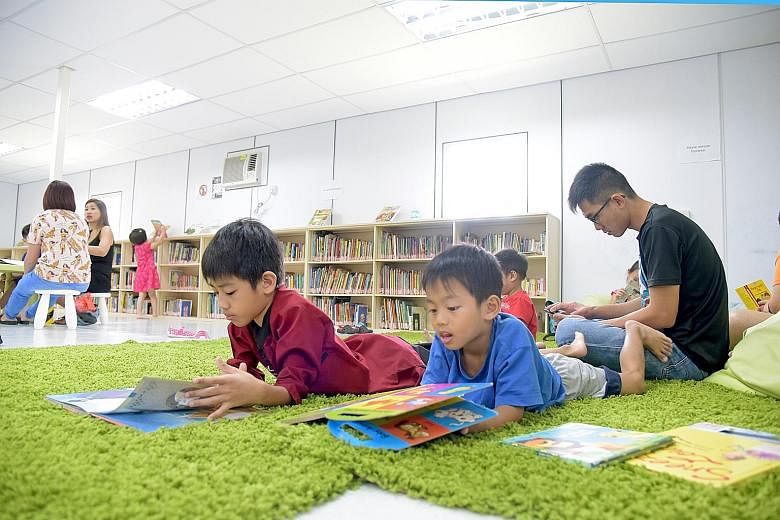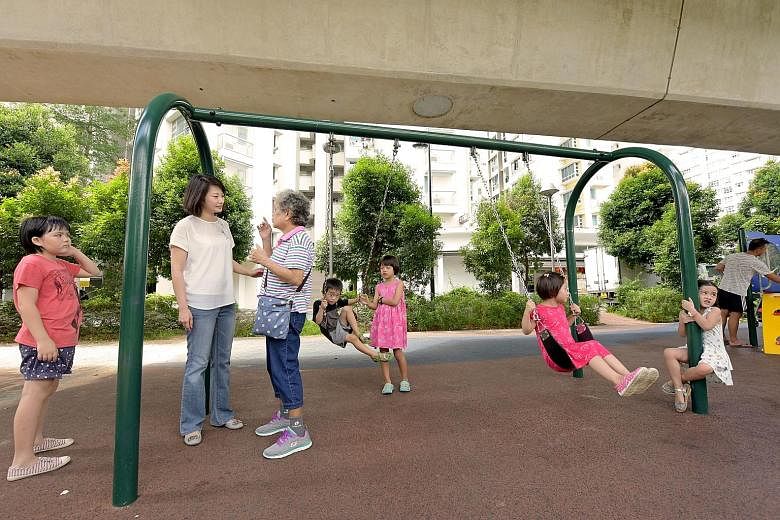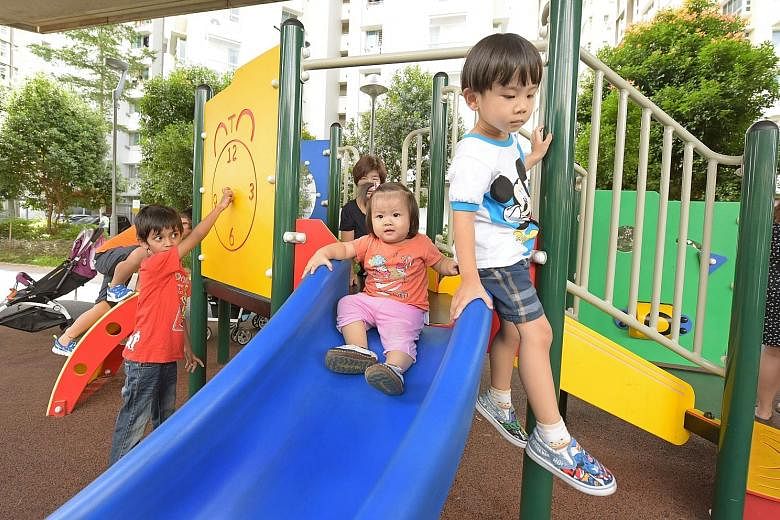Punggol was not Ms Joanne Chew's first choice for a home when she applied for a four-room flat in 2011.
She would have preferred somewhere closer to where her family lives in Bedok Reservoir or near her husband's family in Bukit Batok.
But the north-eastern town was one of the few places that had build-to-order Housing Board flats available at the time.
"I felt like I had no choice," said the 33-year-old civil servant, who is married to 32-year-old Jackson Neo, also a civil servant.
Now, they feel that Punggol is the ideal place for their young family.
Her seven-month-old daughter, Jane, is in infant care just two blocks away from their home. And just a five-minute walk away is Waterway Point, a year-old shopping mall that boasts family-friendly stores, as well as paediatricians and childcare centres.
Jane is one of more than 14,000 children, aged four and below, who now call Punggol home, making it Singapore's baby town.
-
PUNGGOL BY THE NUMBERS
-
14,490
Number of children aged four and below*
-
130,380
Total population*
-
52
Number of childcare centres
-
5,124
Total childcare enrolment**
-
*FIGURES AS OF JUNE 2016 (DEPARTMENT OF STATISTICS)
** AS OF Q1 2017 (EARLY CHILDHOOD DEVELOPMENT AGENCY)
Department of Statistics numbers show that as of last year, 14,490, or 11.1 per cent, of Punggol's more than 130,000 residents are aged four and below - the highest proportion on the island.
In neighbouring Sengkang - located across the Tampines Expressway - children aged four and below make up 7.6 per cent of the total population of 219,380.
In Bedok, an older estate, the proportion is just 3.9 per cent.
Punggol is a popular option for young couples because of its appeal as a "waterfront town", said Mr Ong Kah Seng, director of property market research firm R'ST Research.
While a four-room flat in Punggol costs $197,000 onwards, including grants, a similarly sized unit in Tampines will go for $294,000.
"It's a good place to set up a family," said Mr Ong, pointing to the "comprehensive amenities" available to young families.
Though Punggol boasts 52 childcare centres, catering to more than 6,000 children, due to high demand in the area, parents have reported having to wait up to six months for their children to be placed in a childcare centre.
Two "mega" childcare centres with 1,000 places each, which will be ready by next year, are expected to ease the strain.
Ms Sun Xueling, a Member of Parliament for Pasir Ris-Punggol GRC, said about 14 per cent of residents in her Punggol West constituency are children aged 14 and below in 2015. She added that there are a number of initiatives targeted at them.
For example, two-thirds of the more than 2,000 books at a temporary library made of two cargo containers are aimed at teenagers and children, while an upcoming community centre spread across the void decks of three blocks in Punggol West, expected to be ready later this year, will feature a toy library, where children can borrow toys.
There are also plenty of places for children to run and play.
Punggol has more than 70 playgrounds spread across its various HDB developments, as well as the 4.2km Punggol Waterway.
Civil servant Cheyanne Low said her six-year-old son likes to check out the otters that sometimes make an appearance at the Punggol Waterway.
Beyond amenities, what Punggol offers most is a sense of community, young parents told The Straits Times.
Ms Low and Ms Ong are members of a support group for mothers in the north-east. Besides organising play dates for children, they also meet for supper every few months.
Ms Karen Ho, a nurse, said she interacts more with neighbours now, as they tend to be closer in age and have children around the same age as well.
The 36-year-old is also friends with the parents of her eldest daughter's classmates at the Ministry of Education kindergarten at Punggol Green Primary School.
"When we talk to each other, we think, wouldn't it be nice for all the kids to go to the same primary school too, so they can grow up together?"




